Products
Spherical singlet lenses
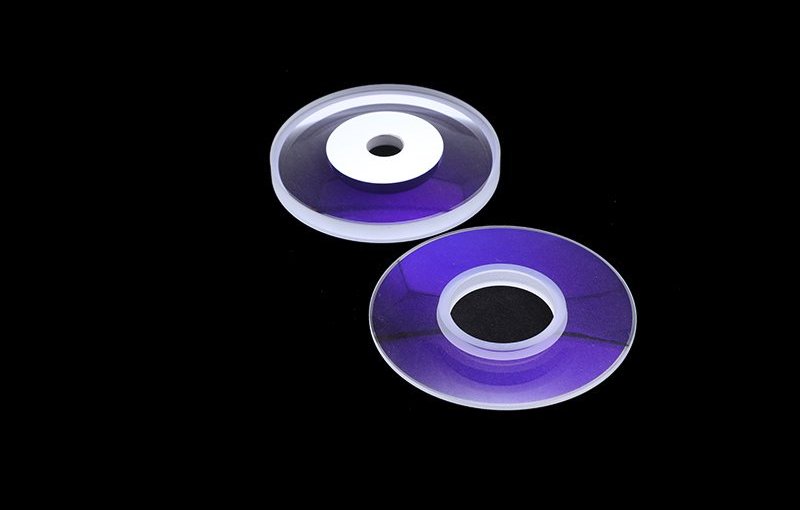
Spherical singlet lenses are relatively simple optical components which have one or two spherically polished surfaces. Depending on the shape they are also called plano-convex, plano-concave, bi-convex, bi-concave or concave-convex lenses. Such kind of lenses are broadly used to focus or expand light. Depending on the spectral region in which they are supposed to work one can use different glass materials. In order to maximize light throughput the polished surfaces can also be coated with an appropriate Antireflex-coating.
Doublet / Triplets
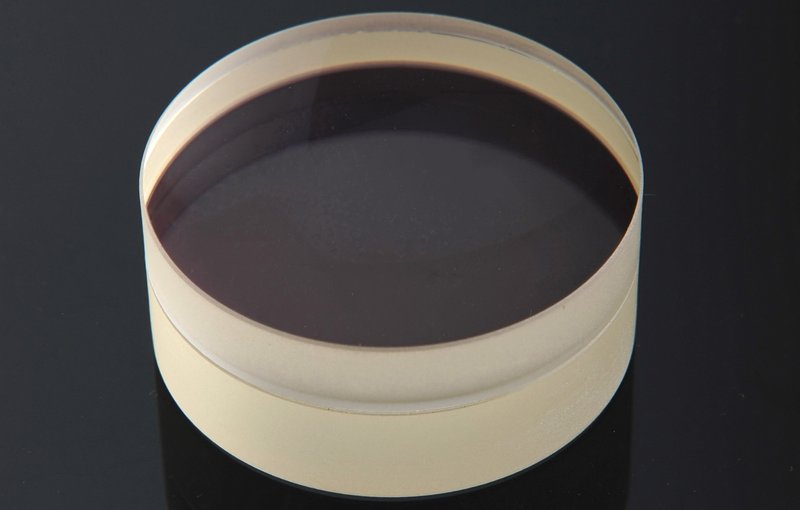
A doublet (sometimes also called achromat) is an optical lens which consist of two (mostly spherical) lenses which are cemented together. A triplet consists of three lenses cemented. With this construction one can achieve a better image as it corrects some of the optical errors which exist with singlet lenses. Depending on the application a variety of optical glasses can be combined to achieve the results you need.
Aspherical lenses
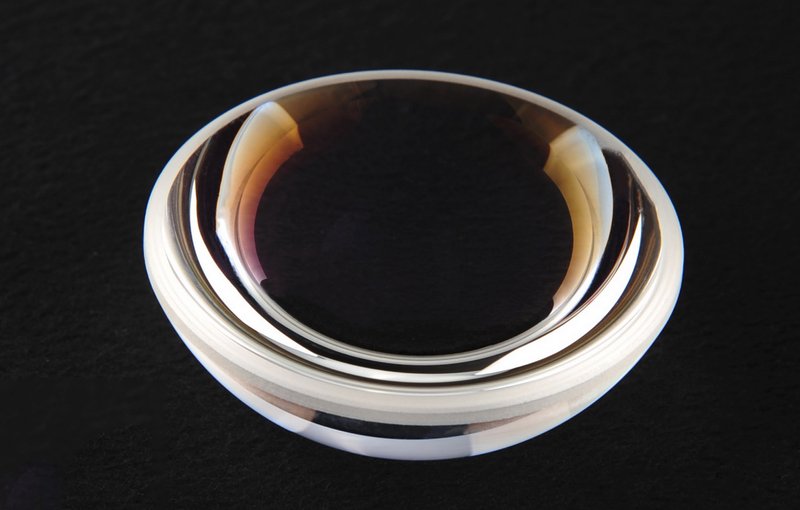
One of the errors which exists with spherical lenses is the so-called spherical aberration. This error can be corrected by using so-called aspherical lenses, which has at least one surface which is non-spherical. One disadvantage though is the fact that such surfaces are more difficult to produce and therefore more expensive.
Generally saying aspherical surfaces can be manufactured with different techniques: Molding, CNC-polishing or MRF-polishing. Molded lenses are relatively cheap but have larger surface errors. CNC- or MRF-polished aspheres are much more precise.
Cylindrical lenses
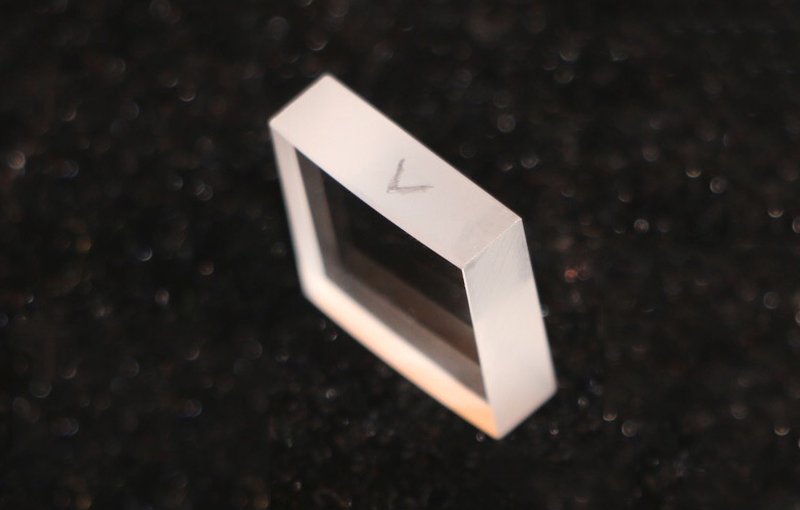
Cylindrical lenses are used in applications in which the light shall only be formed in one axis. In that case the light will only be focused or expanded in one axis. Typical examples are generating a line or collimation of laser diodes with elliptical beam profile.
Windows
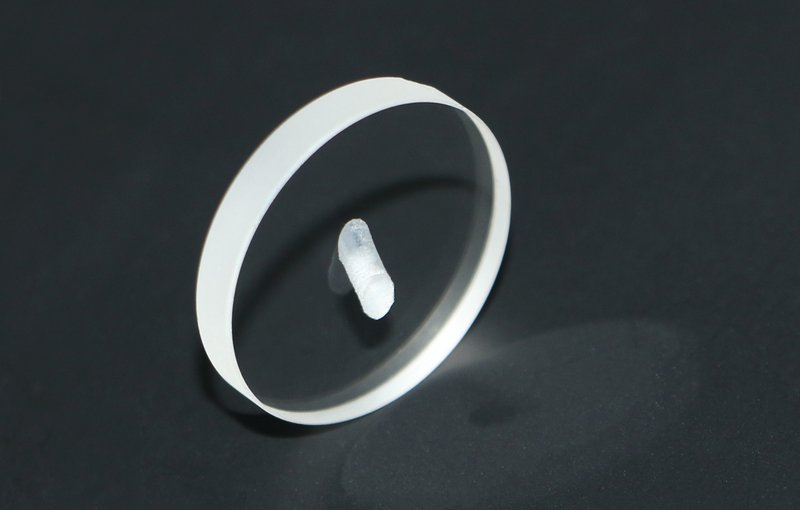
Optical windows are glass plates with two surfaces polishes parallel to each other. These windows are very often use to protect sensitive elements like detectors, sensors or other optical elements. Depending on the spectral range used for the application one can choose different optical glasses as well as optical coatings.
Wedged plates
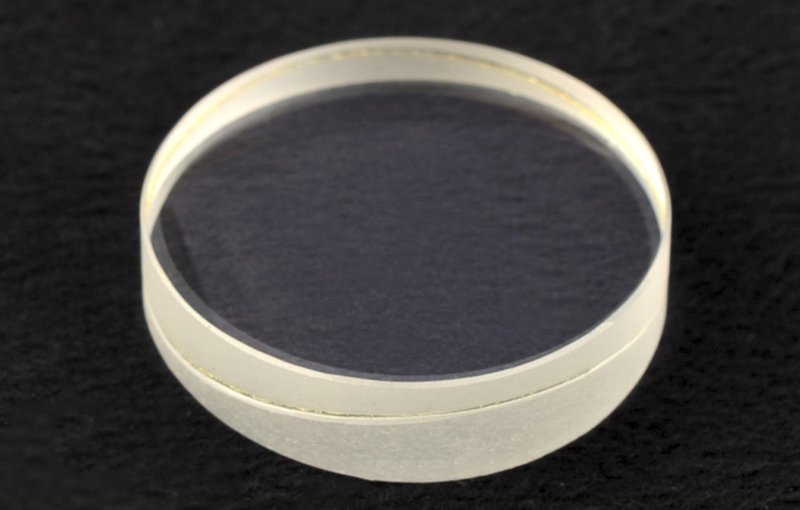
Wedges plates are optical windows which do not have parallel but wedged polished surfaces. A typical application is the defined deflection of incident light by a certain angle (depending on refractive index of material and the angle between the surfaces). Also such wedges plates are used to keep back reflections from polished surfaces out of optical systems.
Mirrors
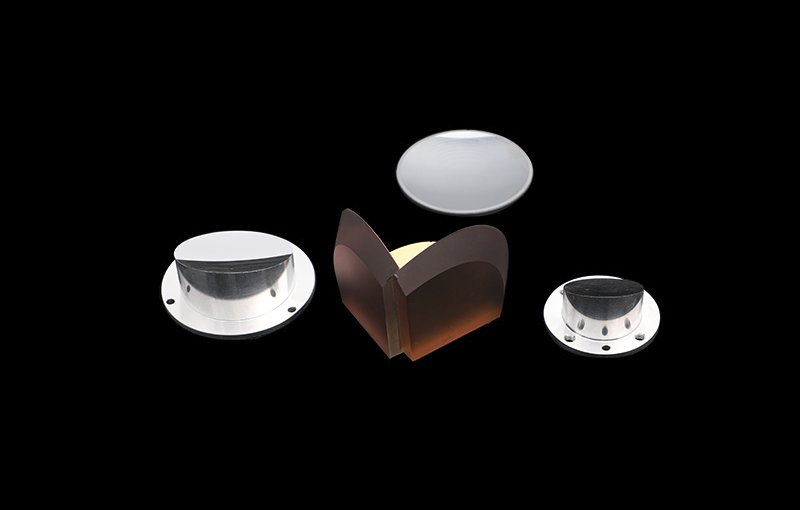
Mirrors are used in optical systems to redirect light and sustain as much of the incident energy as possible. Mirrors are polished glass substrates, which are coated with a high reflective optical coating. Generally one can distinguish between metallic coatings (like Aluminum, Silver, and Gold) and dielectric coatings.
Metallic coatings can reflect a relatively broad spectral range but they are relatively sensitive. Also the reflectivity might not be sufficient for some applications.
Dielectric coating can be optimized for the spectral range they shall be used in and can therefore yield higher reflectivity. On the other hand those coatings might not be used for a large spectral range.
Prisms

Prisms are used to deflect light or to change the orientation of an optical image. The light enters the prism though one surface and is then reflected (inside the prism) by one or more surfaces (depending on the geometry of the prism) before exiting the prim. The surfaces of the prism can also be coated with an antireflex or a reflective coating.
Based on the geometry of the prism one can distinguish between right-angle prisms, penta prisms, roof prisms, Dove prisms, rhomb prisms and other prisms.
Beamsplitter plates
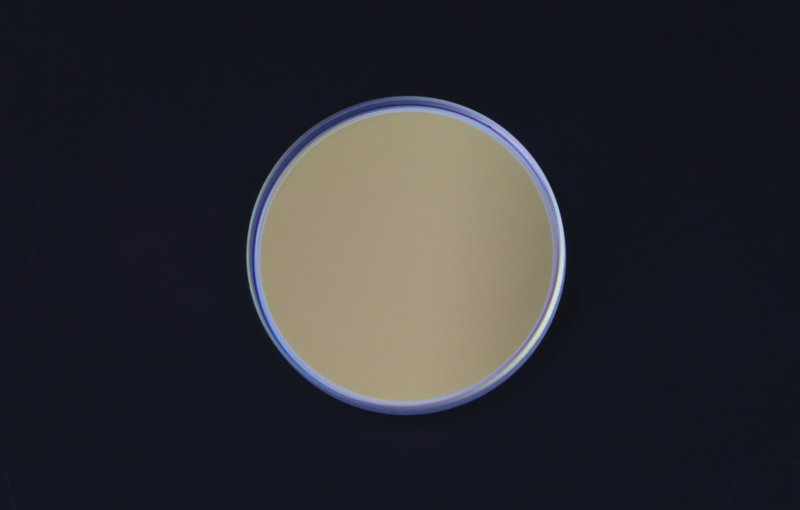
Beamsplitter plates are optical windows, which carry a so-called beamsplitter coating. This coating divides the incident light into two different rays with a defined intensity ratio. One disadvantage of beamsplitter plates with the beam displacement of the transmitted light ray with regards to the incident ray. Also physics sets certain borders with regards to performance which can only be overcome by using beamsplitter cubes instead.
Beamsplitter cubes
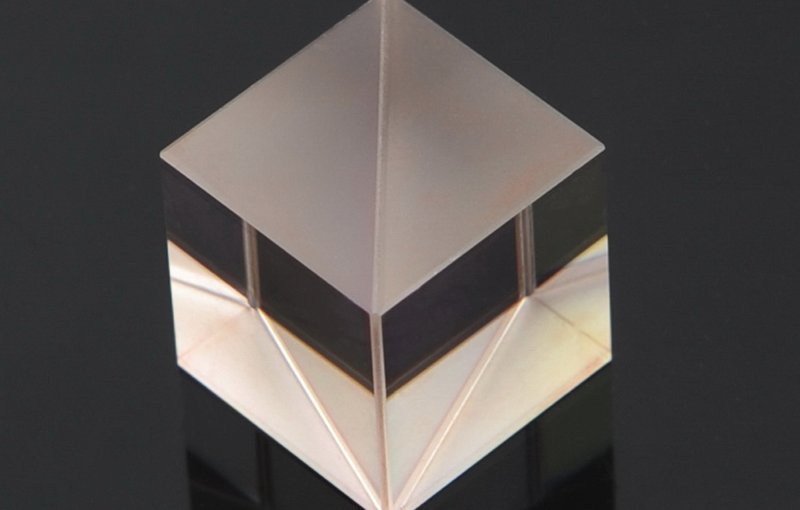
A beamsplitter cube is an optical component which consist of two prisms cemented or optically bonded on their hypothesnuse surfaces. One of these surfaces then carries the beamsplitter coating. Also the entrance and exit surfaces are mostly coated with an appropriate antireflection coating. A beamsplitter cube generally offers a broader range of possibilities but on the other hand it is also by design more expensive than a beamsplitter plate.
Neutral density filter
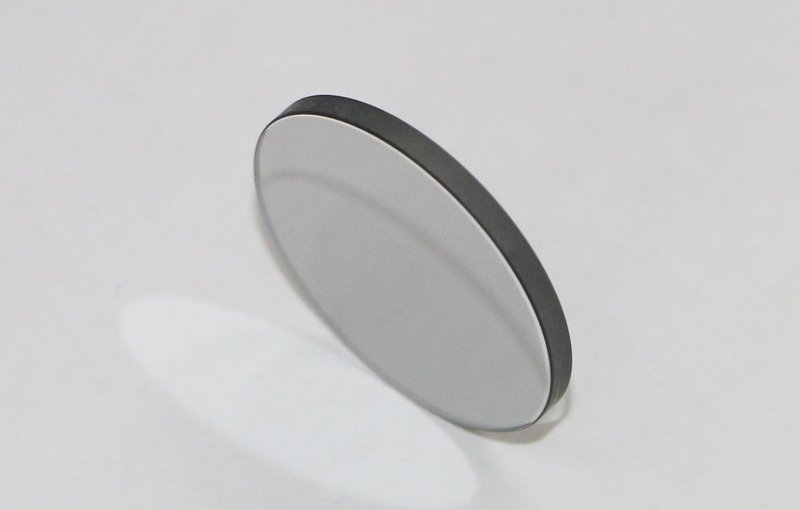
Neutral density filters (ND-Filters) are used wherever it is necessary to reduce the intensity of the incoming light equally over a certain spectral range. One can distinguish absorptive ND-Filters, in which the excess intensity is absorbed in the glass, and coated ND-Filters, in which the intensity is partly absorbed and partly reflected by the metallic coating.
Color glass filters
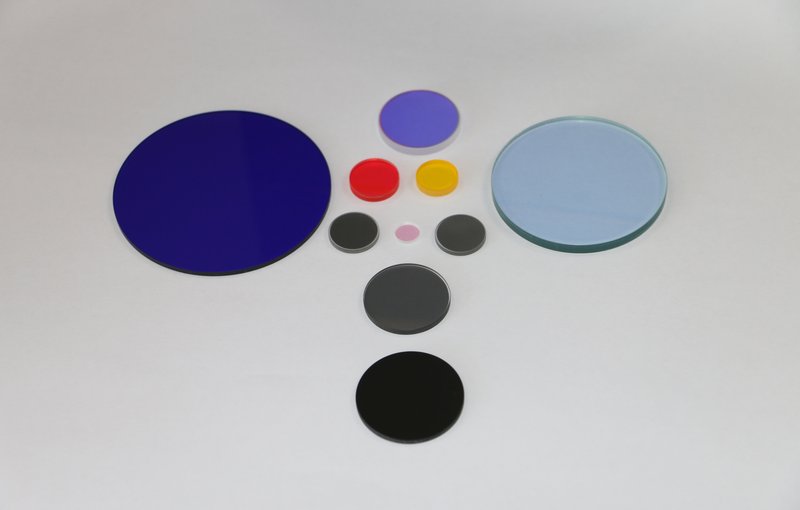
A color glass filter is a polished glass window which is made of a special filter glass. Dependng on the glass used certain spectral ranges are transmitted whereas other ranges are absorbed in the glass. The transmission and absorption ranges are defined by the type of color glass used and can therefore be chosen by the user.
Bandpass filters
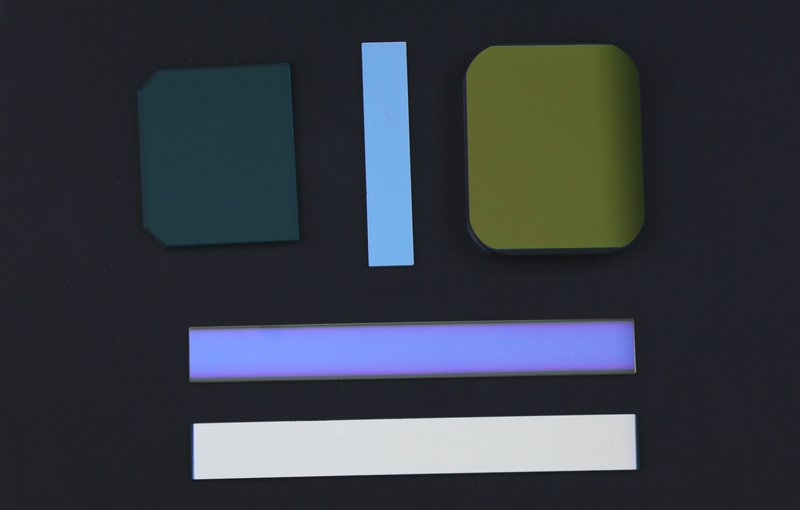
Bandpass filters transmit a defined range of the optical spectrum and block other wavelengths. Typically these filters are used in applications in which the receiving signal has to be filtered out of a broader range before hitting the detector.
The optical properties of bandpass filters are in most cases achieved by applying dielectric optical coatings on glass substrates. Sometimes additionally it might be necessary to use absorbing glasses as well.
Dichroic filters
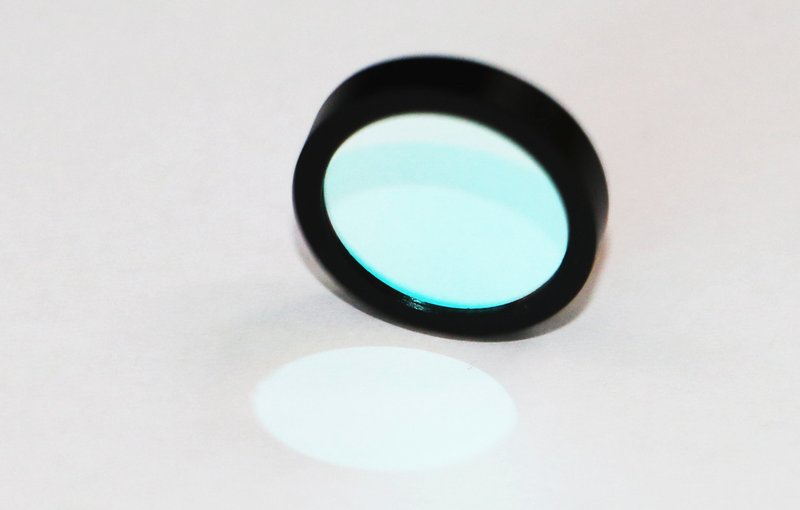
Dichroic filters are filters which transmit defined ranges of the optical spectrum and reflect other defined ranges. Sometimes these filters are also referred to as edge filters, longpass or shortpass filters. The optical properties of these filters are in most cases achieved by dielectric coatings on glass substrates.
Waveplates
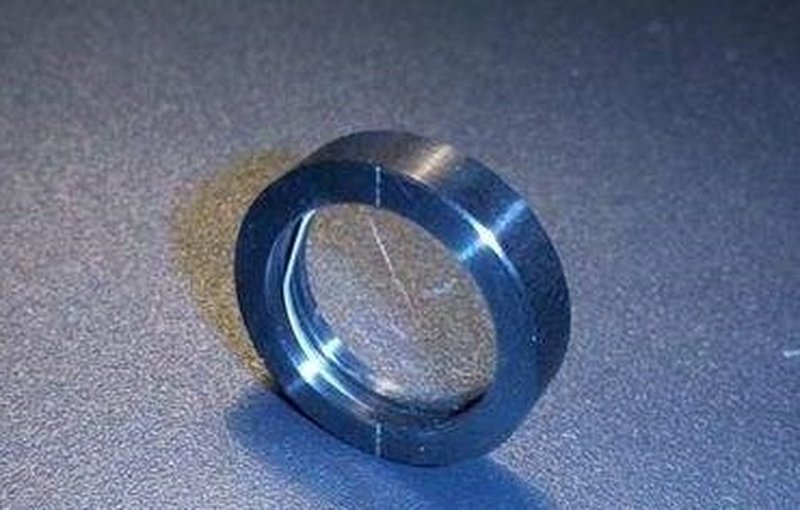
Waveplates (sometimes also called retardation plates) are optical components that transform the polarization of incident light. Waveplates are made of birefringent crystals (mostly quartz) or polymer material. So-called lambda/2 waveplates rotate the polarization plane of the incident light by 90°. Lambda/4 waveplates transform linearly polarized light into circularly polarized light (or vice versa).
Polarizers
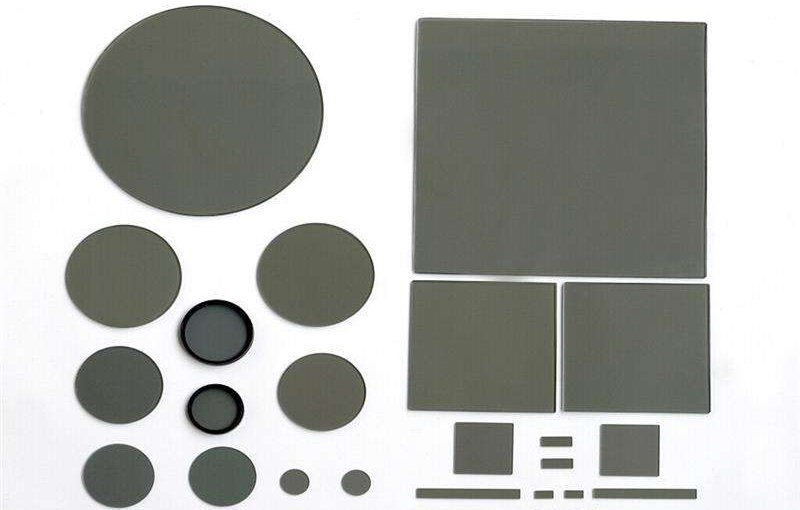
Polarizers are optical components that split the incident light into two different rays with orthogonal polarization planes: This can be achieved by either using special crystals or as well with optical coatings. If optical coatings are used one distinguishes between plate polarizers (coating on flat substrate) and polarizing cubes (coating between two bonded prisms).
Assemblies
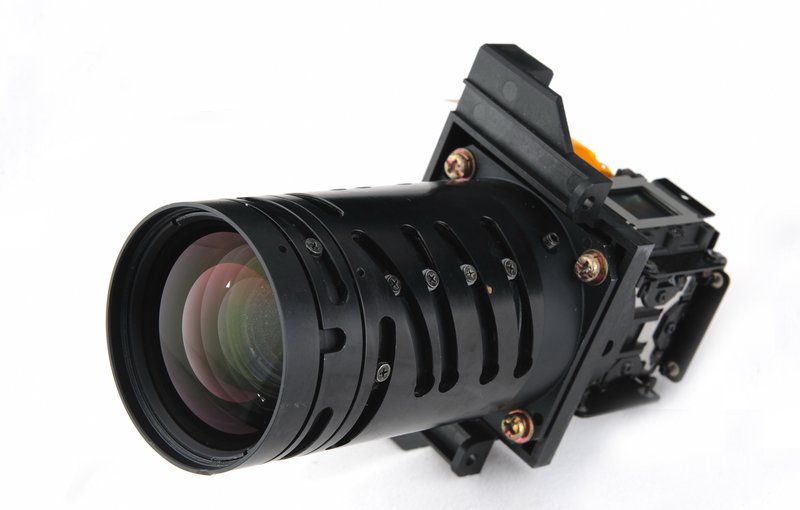
All optical components can also be mounted in customer specific mounts. This also includes assemblies of different optical components in one housing. If you have such kind of request do not hesitate to contact us.
Helium-Neon-Lasers
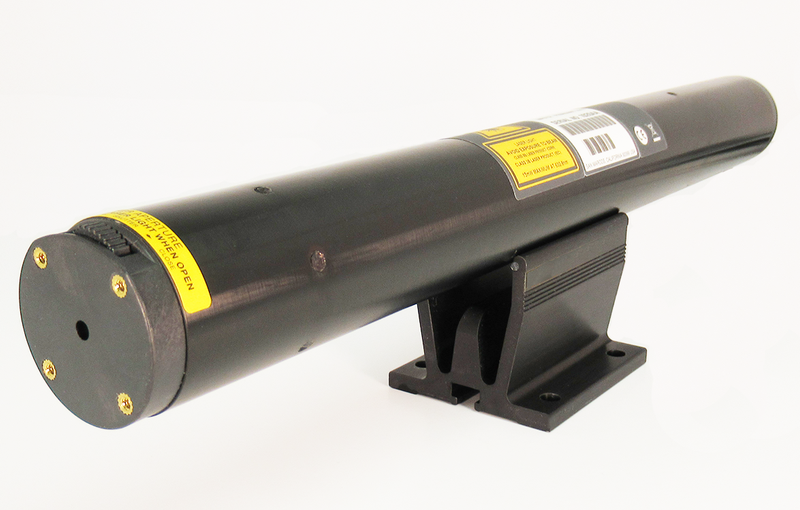
The HeNe-laser continues to be a crucial part of many high demanding customer applications. Its outstanding beam quality, very narrow bandwidth, and long operating lifetime in combination with their decent pricing makes the HeNe still the first choice for instruments in interferometry, FTIR spectroscopy, and other high demanding applications.